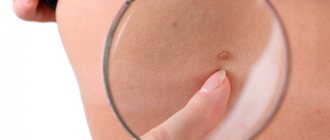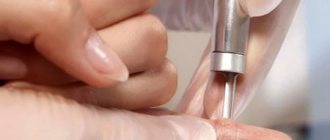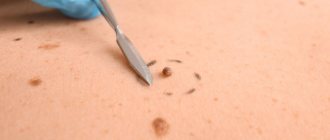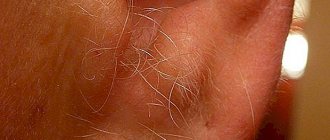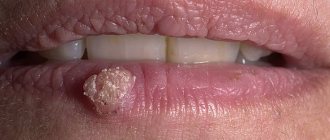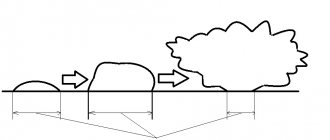- home
- About Us
- Articles
- We remove tumors. What is better: laser or liquid nitrogen?
•
•
•
April 01, 2022 to the list of articles
Moles, warts and other growths cause a lot of discomfort. It’s good that modern methods have appeared that allow you to get rid of them quickly and almost painlessly. These are laser and cryodestruction. What is their essence, and which method is better? Let's figure it out.
The procedure can be carried out in two ways:
- Nitrogen is applied to a cotton swab and applied to the skin.
- Nitrogen is delivered under the skin using a special device.
To remove the tumor, a short exposure to liquid nitrogen on the skin is sufficient. The procedure lasts no more than 30 seconds.
After it is carried out, a blister may appear on the skin, just like after a burn. The wound heals in 10-15 days. Sometimes a scar may form in its place. If the tumor has deep roots, then several procedures may be needed to remove it.
What is the best way to remove moles and warts?
Skin formations, which are often perceived only as a cosmetic defect, require particularly close attention from doctors and competent diagnosis, since they can degenerate into malignant ones. Therefore, the decision - to remove, examine or treat - must be made by the doctor. Currently, aesthetic medicine has a large arsenal of methods for removing various growths on the skin. Acid-containing drugs, which can be easily purchased in city pharmacies, destroy tumor tissue when applied locally. However, you should not self-medicate, since the drug must be used in strict doses, by a specialist with experience in its use. If applied in excess
The acid gets into the surrounding skin and a deep burn develops, resulting in a rough scar. Chemical means also include cryodestruction - removal with liquid nitrogen. Its main advantage is that the tissue destroyed by the cold is not removed, but remains in place, playing the role of a kind of “bandage” that covers and protects the wound from infection.
All this time, the area of treatment does not need treatment and can be wetted several hours after the operation, which is very convenient, for example, when removing formations from the skin of the hands. However, this method also has its disadvantages - it is not always possible to accurately control the depth of impact. Therefore, the possibility of burns to surrounding tissues cannot be ruled out, which may result in a scar. There is also the possibility that the tumor may not be completely eliminated, in which case a repeat procedure will be required.
Basic hardware removal methods
come down to their surgical excision, electro- and laser coagulation. Surgical excision is a traditional method of removing tumors, which is still common and sometimes irreplaceable, for example, if it is necessary to cope with a sufficiently deep or large skin formation. However, the surgeon's intervention leaves scarring on the skin.
Electrocoagulation method
allows you to remove the tumor in one go, and samples of removed tissue can be used for additional tests. This method allows you to control the depth of the effect, but the electric current causes volumetric thermal damage to the tissue around the removed area; a dry crust appears at the operation site, which must be protected from water and the effects of cosmetics for 5-7 days, and get rid of it ahead of schedule (14 -20 days) is not worth it to get the best cosmetic result. This causes a lot of inconvenience to patients.
Recently, removal of benign tumors with a carbon dioxide laser has been widely used.
Its scanning effect allows you to control the depth of penetration into the skin, which minimally damages the surrounding tissues. During the operation, the vessels are coagulated, which makes the procedure bloodless. The postoperative wound becomes covered with a black crust (necrosis of the underlying tissue occurs), which does not look very aesthetically pleasing and requires careful care, as after electrocoagulation.
Another disadvantage
laser beam is the impossibility of conducting additional studies of the tumor after removal (which is necessary to confirm the diagnosis and exclude malignant growth), due to its complete combustion.
Radiosurgery
is a new, gentle method for removing skin tumors. The principle of the effect of radio waves on tissue is very similar to a laser - the evaporation of cells, but numerous studies have shown that an incision with their help causes the least trauma to tissues compared to other methods and the healing process is more active.
Immediately after removal, a small wound the color of normal skin will appear on the skin, which is lubricated with wound-healing creams or gels, it can be wetted and after 5 days it will be covered with new epithelium. This course of the postoperative period does not require time for rehabilitation and allows you to lead a normal lifestyle.
The radiosurgical method has a good cosmetic effect:
It is often difficult to find the surgical site due to the complete restoration of the structure and relief of the skin. In addition, removing a skin tumor with a radio wave will cost much less than laser due to the cost of the equipment.
It should be noted that the use of modern technologies for various interventions often depends on the availability of certain equipment in the clinic. The use of each type of high-energy radiation has its own indications, taking into account their effects on certain tissues, which can only be determined by a specialist.
The radiosurgical method is successfully used in the Allergy and Acid Center using the Surgitron apparatus.
Dermatologist-cosmetologist, candidate of medical sciences,
Natalya Mamula Return to list
How are tumors removed with laser?
The essence of the laser effect on a tumor is that the laser beam evaporates its cells layer by layer. In this case, neighboring tissues are not injured, and the vessels are “sealed”, which eliminates the occurrence of bleeding or infection in the wound.
The procedure can last from 1 to 10 minutes. It all depends on the depth of the roots and the size of the new growths. After the procedure, a crust forms at the site of laser exposure, which dries and falls off after a few days. After about a month, the skin at the site of the neoplasm is completely renewed.
Radio wave method for removing warts
Many people know the radio wave method as removing warts with surgitron . Surgitron is the device itself, with the help of which the procedure is performed. It is a block that generates radio pulses, as well as a handle at the end of which there is a rather thin tungsten filament. It is through it that a radio signal is sent, which destroys the wart and other tumors. It is also worth noting that the removal of warts with surgitron has different reviews. Some say that after the procedure the scar is practically invisible, while others say the opposite: a huge painful blister remains. In this case, much depends on the qualifications of the specialist, the size of the wart, and the depth of its treatment.
What to choose: cryodestruction or laser?
Both procedures can quickly and almost painlessly rid you of tumors. However, cryodestruction is only effective when it comes to small moles or warts.
If the tumor is large in size or has deep roots, then it is better to give preference to a laser. Cryodestruction is not used if the tumor is located on the mucous membranes.
So the laser in this case is the only possible option. As for the cost, laser procedures will cost a little more.
How is wart removal surgically performed?
Quite simply - the site where the tumor is removed is initially disinfected, after which the surgeon cuts out the mole with a scalpel. In this case, the minimum depth of the epithelium is “captured” to leave a minimal scar. The remaining parts of the wart, as well as the root, are scraped off. After this, a regular healing bandage is applied, and the patient is sent for histology - an examination for examples of remaining wart cells that can lead to relapse.
By the way, clinics offer to remove warts with liquid nitrogen much more often than with any other method. This is the simplest procedure, but not the most “humane” for the skin. Laser therapy is still much better, since it performs a similar killing of cells, but does not affect nearby tissues at all. A laser is a high-precision equipment that allows you to cut and destroy the epithelium into a single-cell layer. The only drawback of this option for removing warts is the need to conduct preliminary examinations that will show the exact size of the wart and the depth of the roots.
At the moment, Moscow offers the removal of warts with liquid nitrogen not only in clinics, but also in beauty salons. At the same time, it is recommended to remove tumors with a laser exclusively in clinics, and only after preliminary consultation with specialists and an oncologist.
Causes of papillomas
One of the most likely causes of the appearance of epithelial neoplasms is the human papillomavirus (HPV), which enters the body from the outside and lies dormant until a certain moment. Both men and women are susceptible to the appearance of neoplasms; the age criterion is also not particularly important. Most often, HPV enters the body of a healthy person through unprotected sexual contact, through microtrauma on the skin, or through failure to comply with personal hygiene rules. In some cases, the human papillomavirus is transmitted from an infected mother to her newborn. Papillomas are localized almost everywhere: on the face, abdomen, in the groin and armpits, on the neck, mucous membranes, etc.
Factors leading to virus activation
HPV can remain inactive for as long as desired, but there are certain factors that provoke its activity:
- bad habits;
- impaired metabolism;
- weakened immune system;
- hypothermia;
- atherosclerosis;
- nervous or physical exhaustion;
- antimicrobial drug abuse;
- pathologies of the digestive system;
- long-term use of hormonal contraceptives.
It is worth noting that HPV cannot be cured, it can only be driven into a state of stable remission by strengthening the immune system and eliminating provoking factors.
The main indications for the removal of new skin formations
Laser and radio wave surgery help get rid of various types of benign tumors:
- warts;
- papillomas;
- condylomas;
- keratomas (senile, actinic, seborrheic);
- cutaneous horn;
- hemangiomas;
- nevi (moles);
- fibroids;
- molluscum contagiosum.
Particular attention is paid to moles, since the doctor must remove them completely. If for some reason the tumor is not completely removed, there is a risk of developing melanoma, an aggressive malignant tumor.
Cost of tumor removal in the Northern Administrative District of Moscow, Airport metro station
Laser removal of keratomas
| Name | Price for 1 procedure |
| Histological examination | RUB 2,250 |
| Laser removal of keratomas 1-5 pcs. (1 unit) | 400 rub |
| Laser removal of keratomas 6-10 pcs. (1 unit) | 350 rub. |
| Laser removal of keratomas 11-20 pcs. (1 unit) | 300 rub |
| Laser removal of keratomas more than 20 pcs. (1 unit) | 250 rub. |
| Laser removal of senile keratoma 0.5 -1.0 cm | 1,000 rub. |
| Laser removal of senile keratoma 1.0-2.5 cm | RUB 1,700 |
| Laser removal of senile keratoma larger than 3.0 cm | RUB 3,300 |
Laser removal of papillomas
Removal of epithelial tumors with a laser is a fairly quick and easy-to-perform procedure. Its advantages include:
- minimal risk of injuring healthy tissue;
- no pain;
- Only local anesthesia is required;
- short rehabilitation period;
- does not require hospitalization;
- low chance of infection since there is no contact with blood or open wound;
- rapid healing, as it disinfects and cauterizes the wound;
- short intervention time;
- low probability of relapse;
- absence of scars and cicatrices.
Preparation for the procedure
Despite the simplicity of implementation, laser removal of papillomas is still a surgical intervention, therefore, before proceeding with direct treatment, the patient must undergo general blood and urine tests, blood tests for hormones, allergens and biochemistry. In many cases, biomaterial is taken for a biopsy to determine the type of HPV. 10 - 14 days before the manipulation, you should avoid medicinal baths, tanning, including in a solarium, and applying cosmetics to the affected area. If the papilloma interferes with normal activities, you should cover it with a band-aid.
How does laser cauterization work?
Before starting the manipulation, the specialist will treat the area affected by the laser with an antiseptic solution and local anesthetic, and then begin direct cauterization. During the manipulation, the intracellular contents are evaporated, layer by layer, destroying the pathological growth. The place where the papilloma was turns into a bloodless wound. In some cases, after cauterization, the patient notices slight redness at the removal site, feels itching or minor pain. In most cases, all side effects disappear within 2-3 days.
Contraindications for laser removal
Despite its high efficiency and safety, the technique has a number of contraindications:
- pregnancy, with the exception of cases where there are growths in the area of the vulva or labia, since they can become a source of infection for the baby;
- lactation period, since hormonal changes in the body of a nursing woman can slow down the healing process;
- disorders of the immune system, including AIDS;
- high concentration of glucose in the blood, including in diabetes mellitus;
- blood clotting disorder;
- oncology at stages 3 and 4;
- epilepsy with uncontrolled seizures;
- period of exacerbation of viral and infectious diseases;
- herpes;
- photodermatosis.
Preliminary skin diagnosis
Removal of skin tumors at our aesthetic medicine clinic “Absolut Med” is carried out by our specialists using modern equipment, while skin tumors are removed using time-tested methods and of any location.
Before surgically removing skin tumors, our specialists examine the affected area using dermatoscopy, a non-invasive skin diagnostic method.
The procedure uses a dermatoscope, a special optical device, with the help of which early diagnosis of neoplasms (including malignant ones) is carried out.
Any of the following signs will warrant a dermatoscopy and other tests to help your doctor determine whether a mole or other skin growth needs to be removed:
- Changing the color of a mole
- The mole grows in any direction - it increases in diameter or begins to rise above the skin
- Changes in the surface of the formation - the pattern changes, discharge appears, nodules develop
- Itching around the formation
- Consolidation of the pigment area
- Having a large number of moles
Removal of moles using electrocoagulation
During the electrocoagulation procedure, tissue is removed using electric current for therapeutic purposes. This method allows you to visually control the depth of removal.
An electric current causes thermal damage to the mole and the area around it, which then forms a dry crust. During final healing, a noticeable mark may remain, so this method is not recommended for removing formations on the face.
But using this method, you can remove a mole in 1 session; moreover, the excised tissue is preserved and can be sent for histological examination. Electrocoagulation is carried out using direct and alternating current devices designed for this purpose. Different electrode shapes are used for different situations.
Laser mole removal
This innovative method is considered the most painless and fastest healing. Thanks to local anesthesia, the patient does not feel anything. The excision process takes place in stages: a directed laser beam removes the mole layer by layer.
However, after the procedure, a hole remains, which does not always completely disappear during healing. The beam evaporates the entire tissue of the mole, so it is not suitable for cases where an oncological study of the formation is necessary.
Pigment spots on the face require special attention. Since a healed scar is extremely important here, the specialist also needs to check whether keloid scars remain on the skin.
After removing a mole, the patient needs to protect the area affected by the laser from direct sunlight; this area on the face can be covered with a plaster. When the rehabilitation period is over, the protection can be removed.
Types of skin tumors
1. Almost every person has benign neoplasms on the skin. These include moles, papillomas, condylomas, atheromas, lipomas, nevi and hemangiomas. A feature of these neoplasias is their safety - the risk of tumor malignancy is minimal or completely absent.
Removal of benign tumors is recommended to be performed in aesthetic medicine clinics. Modern removal techniques make it possible to remove moles, papillomas or hemangiomas without scars or cicatricial deformation.
2. Malignant neoplasms of the skin are extremely rare. Oncological pathology is treated in specialized medical centers; they cannot be removed in aesthetic clinics. Examples of malignant skin tumors are sarcoma, basal cell carcinoma, and melanoma.
3. Borderline neoplasms are benign tumors with a high risk of malignancy (malignant degeneration). Occurs in people with a hereditary predisposition and in old age. Like benign tumors, they can be removed using aesthetic medicine methods after a comprehensive diagnosis and exclusion of a malignant process.
Removal of plantar warts
In our medical center in the South-West of Moscow (SWAD), plantar warts are removed with a laser on the same day of treatment. It is a hard and flat formation on the skin of the foot, slightly elevated above its level and covered with a layer of keratinized epithelium.
The development of plantar warts can be facilitated by excessive sweating or dry skin of the feet, uncomfortable shoes that cause compression or friction of the skin of the foot, flat feet, deforming osteoporosis, arthritis of the small joints of the foot, diseases that lead to disruption of the trophism of the foot tissues and damage to the skin of the foot.
The main diagnostic method is dermatoscopy. The location on the sole leads to constant injury and pain while walking.
This type refers to benign skin tumors and accounts for approximately 34% of all cases. A plantar wart can be removed using a laser, cryotherapy, electrocoagulation, or using a radio wave apparatus. At your appointment, your doctor will recommend the method that is right for you.
Removal of any wart with laser or liquid nitrogen without pain and discomfort with the help of a qualified dermatologist at the Med-Yug clinic. Call and sign up for the procedure.
Surgical removal of a mole
Excision of the formation with a scalpel is considered the most painful. If the mole is on the face, this method is not advisable.
After surgery, the temperature may increase.
Surgical removal of moles requires not only the surgeon's qualifications, but also special care for the excision site after surgery. During the rehabilitation process, the patient will have to apply gauze bandages with an antibiotic or other healing ointment, changing them regularly (2 times a day). During the entire healing period, it is prohibited to swim or wet the removal site.
